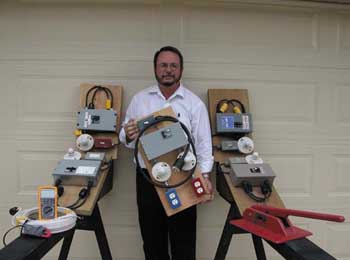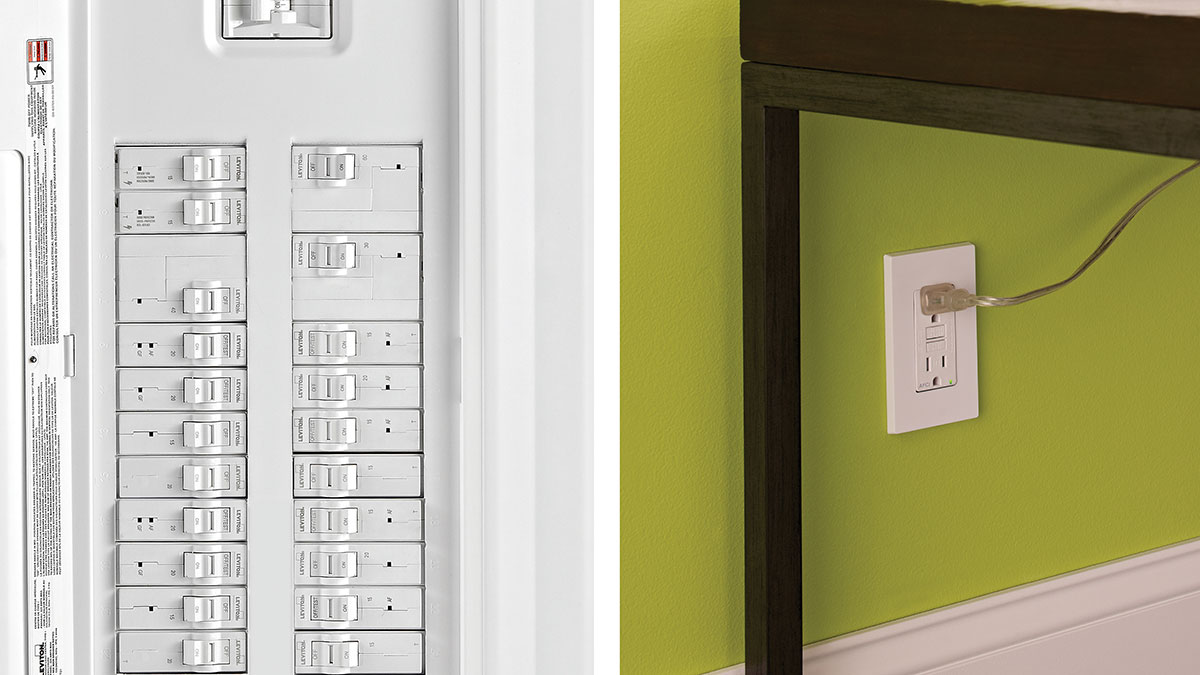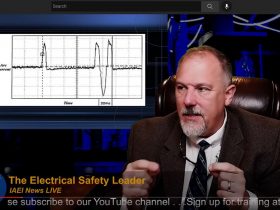Although not required by UL Standard 1699, all of the listed branch/feeder arc-fault circuit breakers currently available also provide a certain degree of ground-fault protection for electrical equipment.
NEC 210-12 requires arc-fault circuit protection in bedrooms but many of us still do not fully understand AFCI function. Arc-fault circuit breakers have been developed to detect potential fire-starting arcs on the branch circuit, within certain parameters. The UL White Book lists seven different listing categories for arc-fault protection devices. The branch/feeder AFCI (B/F AFCI) is just the first that is available. Many expected a certain amount of nuisance tripping from motor brushes, switch opening, and so forth. However, virtually all of the field problems concerning arc-fault breakers were related to the 30 mA ground-fault detection circuit and the fact that the contractor was not aware the branch/feeder AFCI included this feature. (Siemens is only 10 mA). As with GFCI circuit breakers, the circuit must be free of ground faults and the neutral cannot mix with other circuits, with the exception of a shared neutral fed by a two-pole AFCI.

Unlike the safer 5 mA personnel protection of the GFCI, the AFCI will detect 30 mA of current leakage to ground for equipment protection only. This ground-fault feature is extremely valuable in mitigating series and parallel arcing faults in grounded circuits, as well as in protecting equipment from ground faults. Consider a damaged NM cable that develops a parallel or series arc. The bare equipment ground in between the conductors involved should receive sufficient leakage current to clear the arc long before the arc is at the threshold needed for the arc-fault detection circuit.
Many have been asking about a circuit tester for the AFCI, and several people are working on them. Development of a tester that will safely impose a test arc on the circuit has been a real challenge but it is just a matter of time before one is available. Some have been working on a circuit “tripper” for the B/F AFCI that would function similar to the current GFCI testers, by simulating a 30 mA ground fault. The problem with that is that a 30–40 mA current imposed on the grounding conductor could be dangerous if for some reason it was not solidly grounded.
The arc-detection circuit of the B/F AFCI is “looking” for a specific arc signature. This specific arc can be simulated by a carbonized path arc test and a point contact arc test, as described in UL 1699. You are probably familiar with the point contact test as most commonly demonstrated by cutting into a “live” cable or cord with a razor blade mounted in a guillotine. If you have seen this test, you may have noticed a roll of NM cable in the circuit to reduce the available fault current. The idea is to limit the short-circuit amperage to 100–150 amp. This makes it easier to demonstrate the difference between the AFCI and a standard breaker, since both breakers will trip magnetically around 250–300 amp. Currently, UL 1699 requires the arc to be a minimum of 75 amp for the arc-detection circuit of a branch/feeder AFCI. This seems rather high at first glance, but the dedicated people who have spent years developing the AFCI, (and continue to improve it) knew that they had to establish a level that would provide as much protection as possible without incurring nuisance tripping due to all the different arcs that exist normally in circuits. The writers of UL 1699 will probably reduce the level of arc detection down from the 75 amp as experience allows.
I have found actual performance to be a little better than the minimum in my own AFCI testing over the past months using UL 1699 as a guide. All four types of AFCIs— Cutler Hammer, GE, Siemens, and Square D—usually trip on the carbonized path test and the point contact (razor blade) test at as low as 55–60 amp. The regular breakers only tripped when I inadvertently welded the conductors to the razor blade.
The carbonized path test of UL 1699 attempts to simulate a hazard from hidden insulation damage, that over time could permit voltage transients or spikes to arc across the damaged spot because it is the shortest gap in the circuit. These occasional arcs could eventually build a path of conductive carbon at the problem area, which then could result in a fire-starting arc.
I use a 15 kV, 30 mA neon sign transformer to “condition” a sample cable by passing the high voltage through a small cut in the insulation, similar to the UL method. This preparation of the wire sample does not succeed every time. The carbon path will sometimes be more conductive than other times. But when it functions properly and conducts 120 volts across the fault, it makes an impressive test, and will make you a believer in the future of this exciting technology. A good sample of a carbonized path always trips the B/F AFCI (all four brands), and the standard thermal magnetic breakers do not trip.
AFCI technology is, I believe, in an evolutionary process, and we have been blessed with the first version of an overcurrent device that may well replace all others someday. Dual listed breakers for GFCI and AFCI are probably available now. In the near future AFCI devices will be listed that will detect arcs as low as 5 amp, which will better protect cords set downstream of the outlet. There will also soon be an AFCI that is listed as a “combination type” that will provide protection for both the branch circuit and cord sets. The perfect circuit breaker does not exist and may never, but my hat is off to those dedicated people who continue to strive for it.
In the interim, don’t be too analytical if you have trouble with the function of an AFCI breaker. Look for the simple ground-fault problems first. But, if an AFCI is tripping and you have eliminated possible ground faults, then look close because you may have a serious fire hazard.














Find Us on Socials